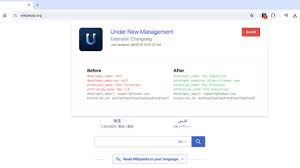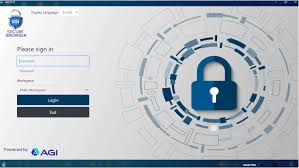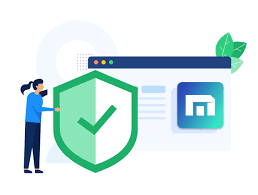In recent years, the security landscape has transformed dramatically, mainly due to the growing complexity and frequency of cyber threats. Organisations now face sophisticated adversaries employing advanced persistent threats (APTs), ransomware attacks, and zero-day exploits with alarming regularity.
One of the most significant shifts is the incorporation of artificial intelligence and automation by attackers. These technologies enable threat actors to execute more effective and elusive attacks, making traditional security measures inadequate. As a result, organisations must adopt a proactive security posture that emphasises preparedness for overreaction.
This approach involves continuous monitoring of systems for unusual activities and real-time threat detection capabilities. Rapid response to incidents is crucial for minimising damage during an attack.
To bolster their defences, businesses should implement integrated Windows security solutions that incorporate advanced threat protection tools. Solutions like Microsoft Defender for Endpoint are essential in detecting and mitigating threats early on, allowing organisations to stay one step ahead in this ever-evolving cyber landscape.

The rise of remote and hybrid work models has significantly transformed the corporate landscape, expanding organisations’ attack surfaces. As employees connect to corporate resources from diverse locations and various personal devices, they inadvertently introduce new vulnerabilities that cybercriminals can exploit.
To counter these risks, businesses must prioritise securing endpoints—laptops, smartphones, and other devices that access sensitive information. This requires a comprehensive strategy that emphasises strong access controls.
Implementing zero-trust principles is essential in this evolving environment. Each access request should undergo stringent identity verification to ensure only authorised personnel gain entry.
Additionally, adopting a least-privilege access approach limits users’ rights to only what is necessary for their roles, minimising potential exposure to security threats.
Windows security configurations also play a critical role. Organisations should emphasise multifactor authentication (MFA), which adds an extra layer of protection against unauthorised access attempts.

Moreover, conditional access policies empower companies to dictate user permissions based on specific conditions, such as location and device health. Overall, as the workplace continues to evolve, a proactive stance on cybersecurity becomes vital in safeguarding organisational assets.
The migration to cloud services has fundamentally transformed the management and security of data and applications. Organisations are increasingly embracing cloud platforms for their flexibility and scalability, but this shift brings about new challenges that require careful attention.
Despite robust security features offered by cloud providers, issues like misconfigurations and potential data exposure can arise if not properly managed. Therefore, companies must expand their security strategies to encompass these new environments effectively.
To navigate this complexity, tools such as Microsoft Azure Security Center play a vital role. These resources enable organisations to monitor cloud workloads closely and ensure adherence to compliance regulations.
Furthermore, aligning Windows security settings with cloud security policies becomes essential. This alignment guarantees a consistent level of protection across both on-premises infrastructure and cloud environments.

Ultimately, a holistic approach to security is necessary in the age of cloud adoption, ensuring that vulnerabilities are minimised while taking full advantage of cloud technology.
The regulatory compliance landscape has transformed significantly with the emergence of stricter data protection regulations such as the General Data Protection Regulation (GDPR) and the California Consumer Privacy Act (CCPA). These regulations underscore the critical importance of safeguarding personal data, making privacy a top priority for organisations across various sectors.
Noncompliance with these laws can have dire consequences. Organisations risk facing substantial financial penalties that could cripple their operations, as well as severe reputational damage that can erode consumer trust. This predicament prompts businesses to adopt robust data protection strategies that encompass both technological solutions and policy enforcement.
Companies are encouraged to implement advanced security measures, including encryption and data loss prevention technologies, to safeguard sensitive information effectively. These tools help ensure that data remains secure from unauthorised access and breaches.
Furthermore, Windows security plays a vital role in supporting compliance efforts. Providing mechanisms to protect sensitive data at rest and in transit enables organisations to maintain stringent security standards. Consistent enforcement of security policies is essential, allowing businesses to navigate the complexities of regulatory requirements confidently. Ultimately, a proactive approach to data protection not only ensures compliance but also fosters a culture of trust with stakeholders.
Supply chain attacks have emerged as a significant threat in the cybersecurity landscape. In these incidents, attackers target trusted vendors or software providers to gain access to their customers’ systems. High-profile cases have brought this issue into sharper focus, underscoring the urgent need for enhanced security measures within third-party ecosystems.
Organisations are now encouraged to thoroughly vet their vendors before establishing partnerships. This includes enforcing stringent security requirements that ensure third-party compliance with industry standards. Additionally, continuous monitoring of vendor practices is crucial to identifying potential vulnerabilities.
To bolster defences, companies should implement specific Windows security settings aimed at detecting unusual activities and preventing unauthorised software installations. Utilising tools like Microsoft Defender Application Guard can further safeguard against threats by isolating potentially harmful applications from the rest of the network.
As supply chain attacks become more prevalent, vigilant oversight and proactive security strategies will be vital for organisations aiming to protect their data and maintain trust in their vendor relationships.
The recent Crowdstrike incident resulted in significant disruptions, impacting potentially millions of Windows systems worldwide. This situation showcases the vulnerabilities inherent in software updates and serves as a vital lesson for IT professionals.

One of the primary takeaways is the importance of change management. The problems stemmed from a faulty update or configuration that Crowdstrike widely distributed. Therefore, it’s essential to adhere strictly to change management protocols.
IT teams should implement comprehensive testing procedures in controlled environments before updating live systems. This proactive approach minimises risks and helps identify potential issues early on.
Moreover, maintaining a robust rollback plan is crucial. In situations where updates lead to unforeseen complications, being able to revert to a previous stable state quickly can prevent extended downtime and further operational disruptions.
Ultimately, this incident reinforces the need for meticulous planning and preparation within IT operations.
The importance of monitoring and alerts emerged starkly when a critical issue went unnoticed, leading to significant disruptions across the system. Without proper oversight, the problem festered until it wreaked havoc on operations.

Implementing continuous monitoring is essential to prevent such occurrences in the future. This involves deploying real-time monitoring tools designed to track system performance and detect anomalies swiftly.
With these tools in place, IT teams can receive immediate alerts about any unusual behaviour or degradation in service. This proactive approach enables them to respond quickly before minor issues escalate into major crises.
By fostering a culture of vigilance and rapid response, organisations can safeguard their systems against unexpected failures. Ultimately, investing in robust monitoring strategies not only enhances system stability but also protects overall business continuity.
The increasing complexity of cyber threats has highlighted the critical need for a layered security approach. Relying solely on a single security solution, such as Crowdstrike, proved to be a double-edged sword; when that system encountered issues, widespread vulnerabilities emerged across the network.

Organisations must recognise the dangers of depending on one vendor for their entire security framework. If one layer of protection fails, sensitive data and systems can be exposed to attacks. A comprehensive strategy involves integrating multiple security tools and technologies that work in synergy.
For instance, combining endpoint protection solutions with robust firewall rules creates a formidable defence against unauthorised access. Furthermore, implementing network segmentation can limit the lateral movement of threats within an organisation’s infrastructure. Adding behavioural analytics into the mix enables proactive threat detection by identifying anomalies in user behaviour.
By diversifying their security measures, organisations can ensure that if one defence mechanism falters, others remain vigilant to protect vital assets from harm. Consequently, adopting a layered security approach becomes not just advisable but essential in today’s digital landscape.
Proactive communication and transparency are critical components in managing incidents effectively. During previous events, delays or lapses in sharing information have often worsened the situation, leading to frustration and confusion among stakeholders.
To mitigate such issues, it is essential to establish a well-defined communication plan specifically designed for emergencies. This plan should outline the roles and responsibilities of team members during an incident, ensuring everyone understands their part in relaying information.
Vendors play a vital role by promptly informing customers about any potential problems as soon as they arise. Swift updates can help manage expectations and build trust with clients, making them feel valued and informed.
Simultaneously, IT teams must maintain open lines of communication with all stakeholders. This includes users who are directly affected by the incidents and management who require insights for decision-making.

Regular updates about ongoing incidents and projected timelines for resolution can significantly enhance trust and cooperation among all parties involved. By fostering a culture of proactive communication, organisations can better navigate challenges and uphold their commitment to transparency.
The recent outage served as a stark reminder of the vulnerabilities organisations face in today’s digital landscape. Many businesses experienced significant disruptions, underlining the critical need for robust disaster recovery and business continuity planning.
IT professionals recognised the urgency of ensuring that their disaster recovery protocols are not only current but also rigorously tested. This means regularly reviewing all aspects of their plans to identify any potential weaknesses or areas for improvement.
Adequate preparation involves more than just theoretical strategies; it requires tangible solutions as well. Organisations must maintain up-to-date backups and alternative systems that can be swiftly activated in case primary security tools fail.

By implementing these measures, businesses can minimise downtime and mitigate losses during unforeseen events. The proactive approach fosters resilience, equipping organisations to navigate disruptions with confidence. Ultimately, the experience advocates for ongoing education and collaboration among IT teams to cultivate a culture of preparedness.
The implications of the Crowdstrike issue highlighted a critical need for vigilance in cybersecurity practices. It became evident that unaddressed vulnerabilities and overlooked system dependencies may have intensified the incident’s fallout.
To enhance security posture, organisations should implement regular audits and assessments of their systems. These evaluations are essential for identifying potential risks linked to both internal vulnerabilities and external vendor dependencies.

By conducting thorough inspections, teams can uncover weaknesses before they manifest into serious problems. This proactive approach allows businesses to stay one step ahead of threats, effectively mitigating risks.
Additionally, incorporating routine assessments fosters a culture of accountability and continuous improvement within an organisation. Stakeholders are reminded that comprehensive security measures are not merely reactive but also preventive.
In light of recent events, there is no better time to prioritise such initiatives. An ongoing commitment to evaluating security infrastructure can safeguard against future challenges posed by vendor failures or unforeseen vulnerabilities.
Incident response readiness is crucial for organisations facing unforeseen security challenges. Many have found themselves struggling when confronted with unexpected incidents, highlighting the need for well-prepared strategies.
To enhance their response capabilities, organisations must develop robust incident response plans. These plans should clearly outline predefined roles and responsibilities, ensuring that each team member understands their part in the process.

Establishing efficient communication channels is equally important. Clear lines of communication can facilitate quick information sharing and decision-making during a crisis.
Regular drills and simulations are essential for preparing IT teams to handle real-world scenarios effectively. Such exercises allow personnel to practice their roles and improve coordination under pressure.
By investing time in these preparations, organisations can foster a culture of readiness that enables them to respond swiftly and effectively when security incidents arise.
The rollout of Windows Recall, an AI feature designed for Microsoft’s new Copilot PCs, faced a significant backlash related to security concerns. Many users worried about how this advanced technology could put their data at risk.
Recall was meant to assist users with various tasks by learning from their interactions. However, critics argued that the AI’s ability to analyse personal information might create vulnerabilities that hackers could exploit. The fear was that while Recall aimed to improve productivity, it could inadvertently expose sensitive data.
As AI becomes increasingly integrated into operating systems like Windows, security challenges will evolve. Features like Recall may offer convenience but also necessitate robust safeguards to protect user privacy and data integrity.

Moving forward, developers will need to strike a balance between innovation and safety. Building trust in AI tools is crucial as we navigate this complex landscape where enhanced functionality must not compromise security.
Enhanced security capabilities in AI are revolutionising how we protect our systems. Features like Windows Recall use advanced algorithms to improve threat detection and response dramatically.
AI can sift through massive amounts of data in real-time. This allows it to spot unusual patterns or behaviours that standard security tools might overlook. By doing so, AI helps identify potential risks before they become serious issues.
As these intelligent features become a core part of Windows, security will shift toward being more automated and efficient. This automation means quicker responses when a threat is detected, reducing the window of opportunity for cybercriminals.

Ultimately, AI-driven security measures could lead to fewer successful attacks. With faster detection and response times, users can feel more confident knowing their data is better protected against emerging threats.
Introducing AI features into operating systems like Windows can significantly expand the attack surface, meaning there are more potential entry points for cyber attackers. AI systems are inherently complex and may contain hidden vulnerabilities that skilled hackers could exploit.
Attackers might target flaws in AI algorithms, as well as in how these systems process data or connect with other software. This poses a challenge for organisations that need to navigate the new risks introduced by integrating AI technology.
Organisations must take a proactive approach to protecting themselves. It’s crucial to regularly update AI models to keep them secure from evolving threats. Additionally, safeguarding the data that powers these models is essential; after all, compromised data can lead directly to faulty predictions or decisions made by the AI.
Moreover, rigorous testing should be conducted to spot any weaknesses before they can be exploited. By staying vigilant and implementing comprehensive security measures, organisations can better manage the risks associated with using AI in their operations.
The Risk of AI Manipulation: There’s a real danger that bad actors could tamper with AI systems or feed them skewed information, which might lead to wrong decisions or actions. For example, specific attacks can trick AI into misidentifying threats or creating false alarms. To combat this issue, companies must establish solid guidelines for managing AI. This means conducting regular checks on models, identifying biases, and setting up ongoing learning processes to make sure the AI can withstand attempts at manipulation.

Working Together with AI: Tools like Recall are meant to enhance what humans can do by taking over mundane tasks and offering insights that might escape human analysts. This allows security experts to concentrate on more complicated and strategic issues. As a result, AI is poised to become an essential ally for security teams, helping them tackle threats more swiftly and effectively. Still, it’s crucial to maintain human oversight since decisions made by AI may need human review and validation.
Regulatory and Ethical Issues: With the growing use of AI in security measures comes an increase in regulations and ethical questions about how it should be used. Issues such as who is responsible for an AI system’s actions, how transparent its decision-making is, and whether it could lead to unfair treatment must be considered carefully. Organisations will have to keep up with changing laws and ethical guidelines regarding AI usage. This includes making sure that their AI tools meet legal standards without unintentionally causing biases or unfair practices.
Building Trust Among Users: The backlash against Windows Recall highlights how crucial user trust is when it comes to adopting new technologies. If users feel that AI tools are intrusive or unsafe, they might hesitate to use them. Companies like Microsoft need to focus on educating users about how these features work and what measures are in place to ensure their privacy and safety. Gaining user trust will be vital for the success of these technologies moving forward.

The Future of AI in Security: Looking ahead, tools like Recall could transform Windows into a more innovative and more flexible security system. AI has the potential to tailor security settings to individual needs, assess risks on the fly, and quickly respond to emerging threats. It seems that Windows security will increasingly rely on AI, making these features vital to keeping users and their devices safe. However, it’s essential to find a way to enjoy the advantages of AI while also being aware of its possible downsides so that these improvements indeed strengthen our security instead of putting it at risk.
How Maxthon Optimizes Security Updates
1. Regular Monitoring: Maxthon continuously monitors the cybersecurity landscape for emerging threats. This proactive approach helps identify vulnerabilities before they can be exploited.
2. Dedicated Security Team: The company has a specialised team focused on security issues. This group evaluates potential risks and develops solutions to mitigate them effectively.
3. Quick Response System: Once a vulnerability is identified, Maxthon employs a quick response system to prioritise fixes. They assess the severity of each threat and deploy patches as needed, ensuring users are protected swiftly.
4. Automated Update Mechanism: Users benefit from an automated update feature that ensures their browser receives the latest security patches without manual intervention. This promotes user safety by minimising the risk of outdated software.

5. User Feedback Integration: Maxthon values user feedback regarding security concerns. They encourage users to report any suspicious behaviour, which helps refine their update processes and enhance overall protection.
6. Comprehensive Testing: Before rolling out updates, each patch undergoes rigorous testing to confirm its effectiveness and compatibility with existing features—this safeguards against introducing new issues.
7. Transparent Communication: After releasing updates, Maxthon communicates details about the changes clearly to users, outlining what vulnerabilities were addressed and providing additional context on improved security measures.
8. Educational Resources: To further empower users, Maxthon provides educational resources about best practices in online safety, helping users understand how to maximise their browser’s security features.
9. Commitment to Improvement: Finally, Maxthon commits itself to continuous improvement by regularly reviewing its security protocols and updating them based on new findings or technological advancements in cybersecurity practices.
